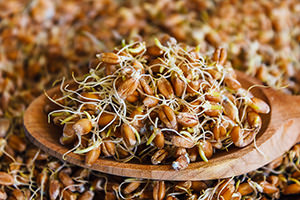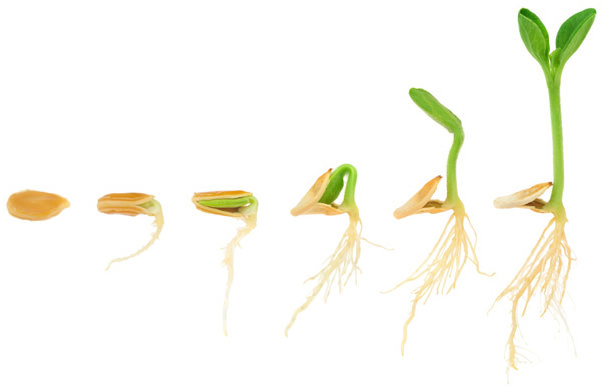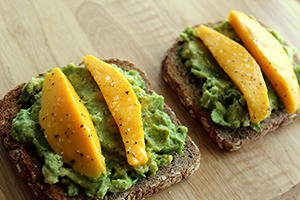
Should You Be Eating Sprouted Bread?
Posted on 04 Oct, 2020

Awareness of the harmful effects of wheat has increased quite a bit in the past few years. Given that wheat is a large part of most people’s diets, many are looking for healthy alternatives. One of those alternatives is sprouted grain bread. How is sprouted bread different from regular bread, and is it as good as some say it is? Here’s what we discovered.
How is Sprouted Bread Made?
 Whole grains (often wheat berries) are literally soaked until they sprout. Notice the little sprouts in the picture?
Whole grains (often wheat berries) are literally soaked until they sprout. Notice the little sprouts in the picture?
Once they have soaked long enough (but not too long or they'll start fermenting!) the grains are mashed together into a dough, combined with a few other ingredients and baked into bread or made into tortillas.
What Does Sprouting Do?
Even though grains like wheat or corn look pretty boring, these tiny seeds contain enormously complex molecular machinery. There are genes, proteins and enzymes that can turn that tiny seed into an entire plant.
When the grain receives the right “signals” – a complex biochemical process begins. The seed starts germinating, breaks through the shell and sends tangles called sprouts into the earth. With enough water and nutrients in the soil, eventually this tiny seed turns into a plant.
A sprouted seed is a seed that has been allowed to begin the process. It is somewhere between being a seed and a full-fledged plant. See the seed that is second from the left. This is a sprouted seed:
But there’s one thing that we need to keep in mind here… the seed does NOT want to sprout in an unfriendly environment. For example, if it started sprouting when the earth is completely dry, then it wouldn’t be able to turn into a plant and would end up dying. For this reason, seeds have protective mechanisms called enzyme inhibitors that prevent them from sprouting until the time is right.
By giving the seed the right signals, mainly hydration (water) and the right temperature, we can disable these enzyme inhibitors and make the seed start to sprout.

Grains and Legumes Contain Anti-Nutrients
There’s another important thing to keep in mind here… most organisms don’t want to be eaten. Grains and legumes are no exception. They need to survive in order for them to get their genes to the next generation. As such, certain plants have developed so-called anti-nutrients in order to discourage animals from consuming them. These are substances that can prevent the absorption of nutrients, inhibit digestive enzymes and have various negative effects on health.
One example is soybeans… due to enzyme inhibitors, they are toxic when raw. Even though most grains and legumes are edible after being cooked, cooking doesn’t eliminate all the anti-nutrients.
Many non-industrial populations throughout the world have eaten grains without problems, but most of them used traditional preparation methods like soaking, sprouting, fermenting and cooking to significantly reduce the amount of anti-nutrients in them.
Are Sprouted Grains Healthier?
Sprouting, as in soaking the grains in water and allowing them to germinate, causes a number of biochemical reactions in the grain.
The benefits of this are twofold:
- Sprouting increases the amount of healthy nutrients.
- Sprouting reduces the amount of harmful anti-nutrients.
How Sprouting Increases Nutrients
Due to the sprouting process, sprouted bread contain more of some vital nutrients. Some studies show that sprouting grains increases their content of the amino acid lysine. Lysine is the limiting amino acid in many plants, so sprouting increases the efficiency that the proteins in the grain can be used for structural and functional purposes in the human body.
Studies also show that sprouting wheat may lead to significant increases in soluble fiber, folate, Vitamin C, Vitamin E and Beta-Carotene.
Sprouting also partially breaks down the starch, because the seed uses the energy in the starch to fuel the sprouting process. For this reason, sprouted grains have slightly less carbohydrates.
 So… due to the sprouting of the seeds, sprouted bread is considered more nutritious than most other types of bread.
So… due to the sprouting of the seeds, sprouted bread is considered more nutritious than most other types of bread.
How Sprouting Decreases Anti-Nutrients
Sprouted grains also have lower amounts of anti-nutrients, which are substances that inhibit the absorption of nutrients like minerals and can cause harm.
- Phytic Acid is a substance found in grains and many other foods. It can bind minerals like Zinc, Calcium, Magnesium and Iron and prevent them from being absorbed. Sprouting modestly reduces phytic acid.
- Enzyme inhibitors are present in seeds, which protect them from spontaneously germinating but may also make the nutrients in them harder to access. Sprouting inactivates some of them.
Another benefit of sprouting is that it reduces the amount of gluten, a protein that many people are sensitive to and is found in wheat, spelt, rye and barley. Due to the reduction in anti-nutrients, sprouted bread may be easier to digest and the nutrients in it are more accessible to the body.
How Do You Eat Sprouted Bread?
 One of the best ways to eat Sprouted Bread is as toast. In the morning, with some peanut butter and at lunch with some avocado slices. It can also be made into sandwiches, but it is a little dry and might take some getting used to.
One of the best ways to eat Sprouted Bread is as toast. In the morning, with some peanut butter and at lunch with some avocado slices. It can also be made into sandwiches, but it is a little dry and might take some getting used to.
It makes great french toast or healthy bread pudding!
Wheat Is Still Associated With A Number Of Health Issues
 It’s important to keep in mind that despite being organic, wheat is still the number one ingredient in sprouted bread.
It’s important to keep in mind that despite being organic, wheat is still the number one ingredient in sprouted bread.
This is a problem because modern wheat is associated with a number of health issues. To make a long story short, wheat:
- Contains gluten, which many people are sensitive to and can contribute to digestive issues, increased gut permeability, etc.
- Wheat consumption has been linked to some cases of cerebellar ataxia, schizophrenia and autism in controlled trials, indicating that wheat gluten may contribute to these diseases in some individuals.
- The fiber in wheat may contribute to a Vitamin D deficiency by making the body burn through its Vitamin D stores much faster.
- One controlled trial shows that whole wheat (yes, the “heart-healthy” kind) can increase Total cholesterol, LDL, small, dense LDL and LDL particle count, which should translate to an increased risk of heart disease.
Great Food Guides You Should Consider

by Michael Moss

by Michael Pollan

by Dr. Alejandro Junger

by Robin Jeep












